BLOG - Page 13
Recently created mixtures:

Sea-Buckthorn Macerated oil
February 7, 2019

Home made air freshener
June 29, 2016

Homemade Dog-rose distillate
June 28, 2016

Homemade jasmine distillate
June 22, 2016

Moxibustion treatment with Moxa stick
May 30, 2016

Face and body gentle oil cleanser
May 26, 2016
BLOG / LATEST ADDITIONS!
Cocoa Butter (Theobroma Cacao) ☸ Base oils ☸ Medicine / Health
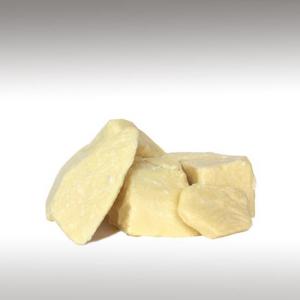

Cocoa beans are a high-antioxidant food, since they contains a significant amount of polyphenol and flavanoid antioxidants. In fact, Cocoa beans themselves have been shown to be one of the greatest suppliers of polyphenols in our diets. Some of these antioxidants remain in Cocoa Butter even after it’s separated from the beans solids, which means it’s beneficial for improving immunity, lowering inflammation and improving heart health - all despite the fact it is a once-feared saturated fat.
Submitted by OperaDreamhouse (January 19, 2018)
Lavandin Grosso Essential Oil (Lavandula x Hybrida var. Grosso) ☸ Essential oils ☸ Base / General
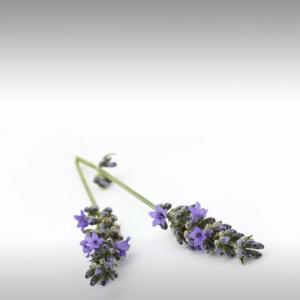

Lavandin Grosso is a Lavender hybrid between True lavender (Lavandula Angustifolia) and Lavender Spike (Lavandula Latifolia). High quality organic Lavandin Grosso essential oil is grown in France and possesses a wonderful aromatic balance between herbal, floral, and camphoraceous notes.
“True” Lavender (Lavandula Angustifolia) grows at high altitudes, while Spike Lavender (Lavandula Spica) thrives at lower altitudes on the same sunny hills in the south of France.
When these two plants flower simultaneously and cross-pollinate to create the hybrid Lavandula x Intermedia, there are several cultivars of this hybrid that appear - namely Levandula x intermedia "Abrialis", "Grosso" , "Reydovan" and "Super". Two important advantages of these hybrids/cultivars: they are more easily grown, and they have a significantly higher yield of essential oils than True Lavenders, thus they can be considerably less costly.
Submitted by OperaDreamhouse (January 19, 2018)
Hawthorn Blossom (Crataegus Laevigata) ☸ Plants ☸ Base / General
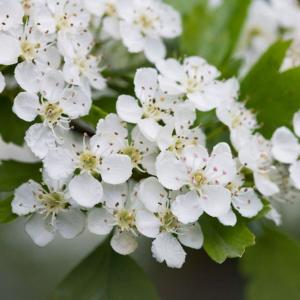

Botanical Name: Crataegus Laevigata;
Botanical Origin: Northern Hemisphere in Europe, Asia and North America;
Part Typically Used: Flowers, leaves, fruits;
Common name: Thornapple, May-tree, Whitethorn, Hawberry;
Crataegus from the Greek Kratos "strength" and Akis "Sharp", referring to the thorns of some species.
Crataegus species are shrubs or small trees, mostly growing to 5 - 15 m tall, with small pome fruit and thorny branches. The thorns are small sharp-tipped branches that arise either from other branches or from the trunk, and are typically 1- 3 cm in one case.
Botanical Origin: Northern Hemisphere in Europe, Asia and North America;
Part Typically Used: Flowers, leaves, fruits;
Common name: Thornapple, May-tree, Whitethorn, Hawberry;
Crataegus from the Greek Kratos "strength" and Akis "Sharp", referring to the thorns of some species.
Crataegus species are shrubs or small trees, mostly growing to 5 - 15 m tall, with small pome fruit and thorny branches. The thorns are small sharp-tipped branches that arise either from other branches or from the trunk, and are typically 1- 3 cm in one case.
The leaves grow spirally arranged on long shoots, and in clusters on spur shoots on the branches or twigs. The leaves of most species have lobed or serrated margins and are somewhat variable in shape.
The fruit, sometimes known as a "Haw", is berry-like but structurally a pome containing from one to five pyrenes that resemble the "Stones" of plums, peaches, which are drupaceous fruit in the same subfamily.
The flowers has five blossoms. Hawthorn Flowers has unpleasant smell because they had chemical component trimethylamine.
The flowers has five blossoms. Hawthorn Flowers has unpleasant smell because they had chemical component trimethylamine.
Most hawthorns bloom in late May - June. When the tree blooms, it most produces a chemical element in trisethylamine. But this is a matter of smell, others like this breathtaking smell.
Hawthorn inflorescences are used in medicine as a tea or as syrup.
Hawthorn inflorescences are used in medicine as a tea or as syrup.
Believed to uplift and strengthen both the physical and emotional heart, Hawthorn, as it supports healthy cardiovascular function, was also revered for ceremonial and spiritual purposes.
Collect the flowering branches in the spring as all parts (leaves, twigs, spines, flowers) may be used for fresh tincturing. Or if drying, discard stems and spines.
Submitted by OperaDreamhouse (November 21, 2017)
Hawthorn Blossom (Crataegus Laevigata) ☸ Plants ☸ Medicine / Health


Therapeutic Properties:
Cardiac
Diuretic
Tonic
Sedative
Vasodilator
Astringent
Hypotensive
Cardioprotective
Contraindications: Possibly safe for most adults when used at recommended doses short-term (up to 16 weeks);
Chemical structure: Hawthorn contains around 1 - 2% flavonoids, oligomeric proanthocyanidins (1 - 3%), saponins, phenolic acids (chlorogenic acid, caffeic acid), 2 - (2-Phenylethyl)chromone derivatives (in the flowers, leaves and buds), amine (phenethylamine, metoksyfenetylamin, dopamine, acetylcholine and tyramine) and triterpenes based on ursolic acid and oleanolic acid;
Anthocyanin is found in the fruit peel and the fruit contains essential oil, pectin, Vitamin C and other substances.
The flowers contain the highest levels of flavonoids, while the leaves contain most of the oligomeric proanthocyanidins;
Pregnancy / Lactation: Because it is heart tonic you can be use in small portions for breastfeeding and in pregnancy period;
Children: Can use in a small portions;
The blossoms were used as a heart tonic and a diuretic. Hawthorn is used for diseases of the heart and blood vessels such as congestive heart failure (CHF), chest pain, and irregular heartbeat. It is also used to treat both low blood pressure and high blood pressure, “hardening of the arteries” (atherosclerosis), and high cholesterol.
Hawthorn can help improve the amount of blood pumped out of the heart during contractions, widen the blood vessels, and increase the transmission of nerve signals.
Hawthorn also seems to have blood pressure-lowering activity, according to early research. It seems to cause relaxing of the blood vessels farther from the heart. It seems that this effect is due to a component in hawthorn called proanthocyanidin.
Some people use hawthorn for digestive system complaints such as indigestion, diarrhea, and stomach pain. It is also used to reduce anxiety, as a sedative, to increase urine output, and for menstrual problems.
Cardiac
Diuretic
Tonic
Sedative
Vasodilator
Astringent
Hypotensive
Cardioprotective
Contraindications: Possibly safe for most adults when used at recommended doses short-term (up to 16 weeks);
Chemical structure: Hawthorn contains around 1 - 2% flavonoids, oligomeric proanthocyanidins (1 - 3%), saponins, phenolic acids (chlorogenic acid, caffeic acid), 2 - (2-Phenylethyl)chromone derivatives (in the flowers, leaves and buds), amine (phenethylamine, metoksyfenetylamin, dopamine, acetylcholine and tyramine) and triterpenes based on ursolic acid and oleanolic acid;
Anthocyanin is found in the fruit peel and the fruit contains essential oil, pectin, Vitamin C and other substances.
The flowers contain the highest levels of flavonoids, while the leaves contain most of the oligomeric proanthocyanidins;
Pregnancy / Lactation: Because it is heart tonic you can be use in small portions for breastfeeding and in pregnancy period;
Children: Can use in a small portions;
The blossoms were used as a heart tonic and a diuretic. Hawthorn is used for diseases of the heart and blood vessels such as congestive heart failure (CHF), chest pain, and irregular heartbeat. It is also used to treat both low blood pressure and high blood pressure, “hardening of the arteries” (atherosclerosis), and high cholesterol.
Hawthorn can help improve the amount of blood pumped out of the heart during contractions, widen the blood vessels, and increase the transmission of nerve signals.
Hawthorn also seems to have blood pressure-lowering activity, according to early research. It seems to cause relaxing of the blood vessels farther from the heart. It seems that this effect is due to a component in hawthorn called proanthocyanidin.
Some people use hawthorn for digestive system complaints such as indigestion, diarrhea, and stomach pain. It is also used to reduce anxiety, as a sedative, to increase urine output, and for menstrual problems.
Submitted by OperaDreamhouse (November 21, 2017)
Small-Leaved Linden Blossoms (Tilia Cordata) ☸ Plants ☸ Medicine / Health
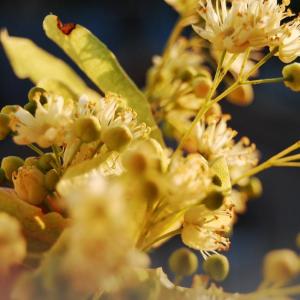

Therapeutic Properties:
Antispasmodic
Diaphoretic
Expectorant
Hypotensive
Laxative
Sedative.
Contraindications: Linden might be safe when taken by mouth. When used on the skin, linden might cause itching.
Pregnancy / Lactation: Not enough is known about the use of linden during pregnancy and breast-feeding. No research done.
But Herbalists say that linden blossoms are characterized by their innovative qualities. Linden tea vapor and tea are extremely useful to women throughout their lifetimes. For mothers who nourish the baby very well eat fresh linden blossoms. It improves breast milk structure.
Linden is one of the few plants containing phytohormones, which is a material close to the female sex hormones.
Children: Small doses can be used for all the diseases described here.
Guidelines: Linden tea is not recommended for drinking during the summer, because it removes moisture from joints, in thet case you can feel joint burns in the winter. In winter you can drink tea of linden flowers, becouse the body works slightly differently in that period and you will not feel sade effects.
Antispasmodic
Diaphoretic
Expectorant
Hypotensive
Laxative
Sedative.
Contraindications: Linden might be safe when taken by mouth. When used on the skin, linden might cause itching.
Pregnancy / Lactation: Not enough is known about the use of linden during pregnancy and breast-feeding. No research done.
But Herbalists say that linden blossoms are characterized by their innovative qualities. Linden tea vapor and tea are extremely useful to women throughout their lifetimes. For mothers who nourish the baby very well eat fresh linden blossoms. It improves breast milk structure.
Linden is one of the few plants containing phytohormones, which is a material close to the female sex hormones.
Children: Small doses can be used for all the diseases described here.
Guidelines: Linden tea is not recommended for drinking during the summer, because it removes moisture from joints, in thet case you can feel joint burns in the winter. In winter you can drink tea of linden flowers, becouse the body works slightly differently in that period and you will not feel sade effects.
The most interesting health benefits of Linden include its ability to improve the immune system, prevent certain forms of cancer, calm and detoxify the body, eliminate anxiety, lower inflammation, and lower blood pressure.
One of the most frequent uses for Linden tea is an anxiety aid, as its soothing properties have been known to reduce mental stress and anxiety.
Linden has numerous medicinal constituents. Active ingredients in linden flowers include quercitin, rutin, kaempferol, volatile oils, mucilage and other flavonoids.The flavonoids and p -coumaric acidappear to be responsible for the diaphoretic (sweat-inducing) and antispasmodic properties of the plant. Other constituents include caffeic and chlorogenic acids, as well as the amino acids alanine, cysteine, cystine and phenylalanine.
More than 24 additional minor components have been identified in the wood, flowers, and fruits of Linden. The fragrant components of the flowers degrade rapidly under conditions of high moisture.
If you suffer from mood swings or unexplained chronic stress, a cup of linden tea can be a very wise addition to your health regimen.
It has a minor effect on your hormone levels, inducing a state of relaxation for the body and mind.
Linden can also reduce nasal congestion and relieve throat irritation and cough.
Antioxidant compounds like quercetin and kaempferol both act as free radical scavengers, eliminating these harmful byproducts of cellular respiration from your system and improving your overall health by preventing chronic diseases.
These are particularly effective for protecting the skin against signs of aging.
P-coumaric acid is another very beneficial organic compound found in Linden that can be accessed in Linden tea. This is known as a diaphoretic, which means that it induces sweating, which is a very effective way of releasing toxins from the body, along with excess salts, fat, water, and foreign substances. This quality also makes Linden valuable for people suffering from fevers, as inducing sweating can help lower a fever faster and prevent permanent damage to organ systems.
It is also used for rapid heartbeat, high blood pressure, excessive bleeding (hemorrhage), trouble sleeping (insomnia), problems with bladder control (incontinence), and muscle spasms. Linden leaf is also used to cause sweating and increase urine production.
One of the most frequent uses for Linden tea is an anxiety aid, as its soothing properties have been known to reduce mental stress and anxiety.
Linden has numerous medicinal constituents. Active ingredients in linden flowers include quercitin, rutin, kaempferol, volatile oils, mucilage and other flavonoids.The flavonoids and p -coumaric acidappear to be responsible for the diaphoretic (sweat-inducing) and antispasmodic properties of the plant. Other constituents include caffeic and chlorogenic acids, as well as the amino acids alanine, cysteine, cystine and phenylalanine.
More than 24 additional minor components have been identified in the wood, flowers, and fruits of Linden. The fragrant components of the flowers degrade rapidly under conditions of high moisture.
If you suffer from mood swings or unexplained chronic stress, a cup of linden tea can be a very wise addition to your health regimen.
It has a minor effect on your hormone levels, inducing a state of relaxation for the body and mind.
Linden can also reduce nasal congestion and relieve throat irritation and cough.
Antioxidant compounds like quercetin and kaempferol both act as free radical scavengers, eliminating these harmful byproducts of cellular respiration from your system and improving your overall health by preventing chronic diseases.
These are particularly effective for protecting the skin against signs of aging.
P-coumaric acid is another very beneficial organic compound found in Linden that can be accessed in Linden tea. This is known as a diaphoretic, which means that it induces sweating, which is a very effective way of releasing toxins from the body, along with excess salts, fat, water, and foreign substances. This quality also makes Linden valuable for people suffering from fevers, as inducing sweating can help lower a fever faster and prevent permanent damage to organ systems.
It is also used for rapid heartbeat, high blood pressure, excessive bleeding (hemorrhage), trouble sleeping (insomnia), problems with bladder control (incontinence), and muscle spasms. Linden leaf is also used to cause sweating and increase urine production.
Submitted by OperaDreamhouse (November 7, 2017)
Beeswax and Honey Mixture ☸ Ingredients ☸ Base / General
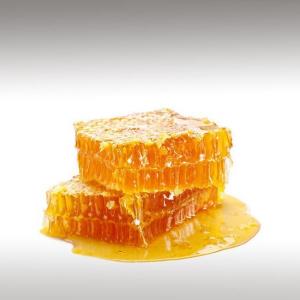

This kind of Honey and Wax has been eaten in ancient times. The body gains both Honey and Beeswax good qualities through the use of this potion.
Honey is a sweet, viscous food substance produced by bees and some related insects. Bees produce Honey from the sugary secretions of plants (floral nectar) or other insects (aphid honeydew) through regurgitation, enzymatic activity, and water evaporation, and store it in Wax structures called honeycombs.
Honeycombs with Honey is removed from the beehive and mechanically mixed all together.
Honey is a sweet, viscous food substance produced by bees and some related insects. Bees produce Honey from the sugary secretions of plants (floral nectar) or other insects (aphid honeydew) through regurgitation, enzymatic activity, and water evaporation, and store it in Wax structures called honeycombs.
Honeycombs with Honey is removed from the beehive and mechanically mixed all together.
Submitted by (November 7, 2017)
Beeswax and Honey Mixture ☸ Ingredients ☸ Medicine / Health


When chewing Honey, the vitamin is absorbed through the mouth of the mucous membranes. A fraction of a piece of Wax suppresses the harmful gastrointestinal tract.
And most importantly - chewing Wax with Honey is prophylactically affecting the respiratory system.
We recommend chewing honey that contains Wax and Pollen. It strengthens the teeth brain, cleans teeth pockets from food residues, helps fight paradantosis.
Our ancestors ate Honey with Beewax and Bee Bread. Salts dissolve active Wax materials that favor teeth.
You do not have to be afraid to inject a piece of Wax, which, together with the pitch ingot, gets into the digestive tract, will improve the intestinal function. In addition, the Wax is chewed in the mouth, improves the release of saliva and gastric juice, thereby improving appetite and digestion.
Beekeepers say that the best Honey is in the Wax and Hony Mixture - it preserves all the healing properties. In addition, in Wax, Vitamin A (Carotene) is even more thcarotene) is even more than carrots.
Recent research by A. Sinyakov has shown that Wax contains a significant amount of Vitamin A, which is essential for the regeneration of the skin epithelium. Recently, anti-inflammatory action of Wax has been proven (antibiotics-like substances have been found in it). Because of this, Wax can be used to treat skin lesions and mucosal lesions.
According to A. Sinyakov, this is due to the fact that none of the natural products contain as much carotene and carotenoids as Wax. To date, carotene (Provitamin A) has been thought to be predominantly carrot. However, it turned out that 100 g carrot carotenes has 2 to 9 mg, and 100 g of Wax contains 8 to 12 mg of carotene.
In recent years, Wax has been shown to be used orally (oral) for the treatment of spastic colitis and obliterative endarteritis. Treatment with Wax can be combined with other medications.
When using Honey, it is usually advisable to dilute it, as it makes it easier for its ingredients to enter the tissues of the body. However, Honey, as with any medication or food, can not be abused - it is recommended to eat about one spoonful of this natural product per day.
And most importantly - chewing Wax with Honey is prophylactically affecting the respiratory system.
We recommend chewing honey that contains Wax and Pollen. It strengthens the teeth brain, cleans teeth pockets from food residues, helps fight paradantosis.
Our ancestors ate Honey with Beewax and Bee Bread. Salts dissolve active Wax materials that favor teeth.
You do not have to be afraid to inject a piece of Wax, which, together with the pitch ingot, gets into the digestive tract, will improve the intestinal function. In addition, the Wax is chewed in the mouth, improves the release of saliva and gastric juice, thereby improving appetite and digestion.
Beekeepers say that the best Honey is in the Wax and Hony Mixture - it preserves all the healing properties. In addition, in Wax, Vitamin A (Carotene) is even more thcarotene) is even more than carrots.
Recent research by A. Sinyakov has shown that Wax contains a significant amount of Vitamin A, which is essential for the regeneration of the skin epithelium. Recently, anti-inflammatory action of Wax has been proven (antibiotics-like substances have been found in it). Because of this, Wax can be used to treat skin lesions and mucosal lesions.
According to A. Sinyakov, this is due to the fact that none of the natural products contain as much carotene and carotenoids as Wax. To date, carotene (Provitamin A) has been thought to be predominantly carrot. However, it turned out that 100 g carrot carotenes has 2 to 9 mg, and 100 g of Wax contains 8 to 12 mg of carotene.
In recent years, Wax has been shown to be used orally (oral) for the treatment of spastic colitis and obliterative endarteritis. Treatment with Wax can be combined with other medications.
When using Honey, it is usually advisable to dilute it, as it makes it easier for its ingredients to enter the tissues of the body. However, Honey, as with any medication or food, can not be abused - it is recommended to eat about one spoonful of this natural product per day.
Submitted by OperaDreamhouse (November 7, 2017)
St Johns Wort Flowers (Hypericum Perforatum) ☸ Plants ☸ Base / General


Botanical Name: Hypericum Perforatum
Botanical Origin: Europe and Asia
Part Typically Used: Flowers, stems, leaves
Common name: Saint John's wort, St John's wort, perforate St John's wort, Goatweed.
Hypericum Perforatum is a flowering plant in the family Hypericaceae. The common name "St John's Wort" may be used to refer to any species of the genus Hypericum.
Hypericum Perforatum is native to parts of Europe and Asia but has spread to temperate regions worldwide as a cosmopolitan invasive weed.
The common name "St John's Wort" comes from its traditional flowering and harvesting on St John's Day, 24 June. The genus name Hypericum is derived from the Greek words Hyper (Above) and Eikon (Picture), in reference to the tradition of hanging plants over religious icons in the home during St John's Day, to ward off evil.
St John’s Wort is distinguished by its almost woody base, opposite leaves, bright yellow flowers, and leaves with transparent dots. This plant can grow to 1 metre high. St John’s wort blooms from June to August.
St John’s wort flowers are bright yellow. Numerous flower clusters are at ends of branches with each flower measuring about 2 cm across. It has five yellow petals with several, small, black dots along the margins; it also has many stamens in 3 clusters and a single pistil in the centre.
The flowers and herb are picked during the summer months traditionally the week following 24th June. They can then be dried at a medium temperature in the shade. An infusion can be made from adding the dried herb to boiling water.
Traditionally used as a tea, sometimes available in tea bags. Also used to make a red St John's oil for use in liniments and lotions, but only from fresh material. May also be administered as a capsule or extract for convenience.
Botanical Origin: Europe and Asia
Part Typically Used: Flowers, stems, leaves
Common name: Saint John's wort, St John's wort, perforate St John's wort, Goatweed.
Hypericum Perforatum is a flowering plant in the family Hypericaceae. The common name "St John's Wort" may be used to refer to any species of the genus Hypericum.
Hypericum Perforatum is native to parts of Europe and Asia but has spread to temperate regions worldwide as a cosmopolitan invasive weed.
The common name "St John's Wort" comes from its traditional flowering and harvesting on St John's Day, 24 June. The genus name Hypericum is derived from the Greek words Hyper (Above) and Eikon (Picture), in reference to the tradition of hanging plants over religious icons in the home during St John's Day, to ward off evil.
St John’s Wort is distinguished by its almost woody base, opposite leaves, bright yellow flowers, and leaves with transparent dots. This plant can grow to 1 metre high. St John’s wort blooms from June to August.
St John’s wort flowers are bright yellow. Numerous flower clusters are at ends of branches with each flower measuring about 2 cm across. It has five yellow petals with several, small, black dots along the margins; it also has many stamens in 3 clusters and a single pistil in the centre.
The flowers and herb are picked during the summer months traditionally the week following 24th June. They can then be dried at a medium temperature in the shade. An infusion can be made from adding the dried herb to boiling water.
Traditionally used as a tea, sometimes available in tea bags. Also used to make a red St John's oil for use in liniments and lotions, but only from fresh material. May also be administered as a capsule or extract for convenience.
Submitted by OperaDreamhouse (November 6, 2017)
St Johns Wort Flowers (Hypericum Perforatum) ☸ Plants ☸ Medicine / Health


Therapeutic Properties:
Analgesic
Antiseptic
Antispasmodic
Aromatic
Astringent
Cholagogue
Digestive
Diuretic
Expectorant
Nervine
Resolvent
Sedative
Stimulant
Vulnerary
Contraindications: Not to be used during phototherapy. Fair-skinned persons should avoid excessive exposure to sunlight during use. May decrease the blood levels of certain orally administered drugs.
St John's Wort is associated with aggravating psychosis in people who have schizophrenia.
Should not be taken by women on contraceptive pills as it upregulates the CYP3A4 cytochrome of the P450 system in the liver. Combining estrogen containing oral contraceptives with St John's wort can lead to decreased efficacy of the contraceptive and eventually unplanned pregnancies.
St. John's Wort has been known to decrease the blood concentrations of immunosuppressants (cyclosporine & tacrolimus), sedatives (midazolam & alprazolam), anticoagulants (phenprocoumon), chemotherapy drugs (irinotecan) and other medications.
It is also known to decrease the efficacy of HIV medications, cholesterol medications, as well as transplant medications.
Antiseptic
Antispasmodic
Aromatic
Astringent
Cholagogue
Digestive
Diuretic
Expectorant
Nervine
Resolvent
Sedative
Stimulant
Vulnerary
Contraindications: Not to be used during phototherapy. Fair-skinned persons should avoid excessive exposure to sunlight during use. May decrease the blood levels of certain orally administered drugs.
St John's Wort is associated with aggravating psychosis in people who have schizophrenia.
Should not be taken by women on contraceptive pills as it upregulates the CYP3A4 cytochrome of the P450 system in the liver. Combining estrogen containing oral contraceptives with St John's wort can lead to decreased efficacy of the contraceptive and eventually unplanned pregnancies.
St. John's Wort has been known to decrease the blood concentrations of immunosuppressants (cyclosporine & tacrolimus), sedatives (midazolam & alprazolam), anticoagulants (phenprocoumon), chemotherapy drugs (irinotecan) and other medications.
It is also known to decrease the efficacy of HIV medications, cholesterol medications, as well as transplant medications.
Pregnancy / Lactation: Recommend to consult with a qualified healthcare practitioner before using herbal products, particularly if you are pregnant, nursing, or on any medications.
Children: It has been used in children to control bed-wetting, mild depression, as a topical agent for the relief of pain from skin infections such as dermatitis, and in drops for ear pain associated with an ear infection.
Guidelines: No matter how much this herb has blocked the action of drugs in the body, St. John's Wort is a very beloved in herbalist world. It is a very effective herbal remedy.
Children: It has been used in children to control bed-wetting, mild depression, as a topical agent for the relief of pain from skin infections such as dermatitis, and in drops for ear pain associated with an ear infection.
Guidelines: No matter how much this herb has blocked the action of drugs in the body, St. John's Wort is a very beloved in herbalist world. It is a very effective herbal remedy.
Common St. John's-Wort has long been used in herbalism. It was known to have medical properties in Classical Antiquity and was a standard component of theriacs.
Hepericum Perforatum is one of many species known commonly as St John's Wort, and is the species most commonly associated with herbal medicine.
It is a medicinal herbwith antidepressant activity and potent anti-inflammatory properties. St John's Wort helps promotes a healthy mood and emotional balance.
A major constituent chemical in herb, hyperforin, may be useful for treatment of alcoholism, although dosage, safety and efficacy have not been studied. Hyperforin has also displayed antibacterial properties against Gram-positive bacteria, although dosage, safety and efficacy has not been studied.
In ancient times, St John’s Wort was used as a sedative and to treat malaria. It was also used as a balm for wounds, burns and insect bites.
A major constituent chemical in herb, hyperforin, may be useful for treatment of alcoholism, although dosage, safety and efficacy have not been studied. Hyperforin has also displayed antibacterial properties against Gram-positive bacteria, although dosage, safety and efficacy has not been studied.
In ancient times, St John’s Wort was used as a sedative and to treat malaria. It was also used as a balm for wounds, burns and insect bites.
Submitted by OperaDreamhouse (November 6, 2017)
Himalayan Pink Salt ☸ Ingredients ☸ Base / General
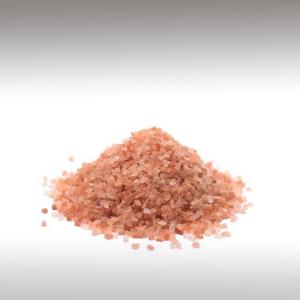

Himalayan Salt is chemically similar to Table Salt plus mineral impurities like chromium, iron, zinc, lead, and copper. Pink Himalayan Salt is often said to be the most beneficial as well as the cleanest Salt available on this planet today.
Some Salt crystals from the Himalayas have an off-white to transparent color, while impurities in some veins of Salt give it a pink, reddish, or beet-red color.
The concentration of salt near Khewra, Punjab is said to have been discovered around 326 BC when the troops led by Alexander the Great stopped to rest there and noticed their horses licking the salty rocks. Salt was probably mined there from that time, but the first records of mining are from the Janjua people in the 1200s.
Himalayan Salt is mostly mined at the Khewra Salt Mine in Khewra, Jhelum District, Punjab, which is situated in the foothills of the Salt Range hill system in the Punjab province of the Pakistan Indo-Gangetic Plain.
Some Salt crystals from the Himalayas have an off-white to transparent color, while impurities in some veins of Salt give it a pink, reddish, or beet-red color.
The concentration of salt near Khewra, Punjab is said to have been discovered around 326 BC when the troops led by Alexander the Great stopped to rest there and noticed their horses licking the salty rocks. Salt was probably mined there from that time, but the first records of mining are from the Janjua people in the 1200s.
Himalayan Salt is mostly mined at the Khewra Salt Mine in Khewra, Jhelum District, Punjab, which is situated in the foothills of the Salt Range hill system in the Punjab province of the Pakistan Indo-Gangetic Plain.
Pink Himalayan Salt is a truly unique salt. It’s also referred to as Pink Salt, Himalayan Sea Salt, Rock Salt and Himalayan Crystal Salt.
This salt is classified as Rock Salt or Halite, which comes from the Punjab region of Pakistan about 190 miles from the Himalayas. This region has one of the richest salt fields in the entire world, and they are very old. With a history dating back to Earth’s creation, Himalayan Salt is believed to be composed of dried remnants of the original, primal sea.
Himalayan Crystal Salt comes from salt mines 5,000 feet deep below the Himalayan Mountain Range. The salt from these mines has experienced tremendous pressure over millions of years and is said to be over 99% pure.
This salt is classified as Rock Salt or Halite, which comes from the Punjab region of Pakistan about 190 miles from the Himalayas. This region has one of the richest salt fields in the entire world, and they are very old. With a history dating back to Earth’s creation, Himalayan Salt is believed to be composed of dried remnants of the original, primal sea.
Himalayan Crystal Salt comes from salt mines 5,000 feet deep below the Himalayan Mountain Range. The salt from these mines has experienced tremendous pressure over millions of years and is said to be over 99% pure.
Submitted by OperaDreamhouse (November 5, 2017)
Himalayan Pink Salt ☸ Ingredients ☸ Medicine / Health


Therapeutic properties:
Aids in vascular health;
Supports healthy lungs and respiratory function;
Promotes a stable pH balance within the cells;
Reduces the signs of aging;
Promotes healthy sleep patterns;
Increases libido;
Prevents muscle cramps;
Increases hydration;
Strengthen bones;
Lowers blood pressure;
Improves circulation;
Detoxifies the body of heavy metals;
Contract and relax muscles;
Maintain proper fluid balance and prevent dehydration;
Send nervous system impulses;
Prevent low blood pressure.
Supports healthy lungs and respiratory function;
Promotes a stable pH balance within the cells;
Reduces the signs of aging;
Promotes healthy sleep patterns;
Increases libido;
Prevents muscle cramps;
Increases hydration;
Strengthen bones;
Lowers blood pressure;
Improves circulation;
Detoxifies the body of heavy metals;
Contract and relax muscles;
Maintain proper fluid balance and prevent dehydration;
Send nervous system impulses;
Prevent low blood pressure.
Pink Himalayan Salt is a much more balanced and healthy choice in comparison to common Table Salt. True, high-quality Pink Himalayan Salt is one of the purest salts you can find.
Table Salt is very heavily processed, eliminating its minerals. Commercial table salt is typically 97.5 % to 99.9% Sodium Chloride. Meanwhile, a high-quality unrefined salt like Himalayan Sea Salt is only about 87 percent Sodium Chloride.
Himalayan Salt contains the same 60 - 84 trace minerals and elements that are found in the human body, a few of which include Sodium Chloride, sulphate, calcium, potassium, and magnesium. When consuming this salt, you are actually getting less Sodium intake per serving than regular Table Salt because it is less refined and the pieces are larger.
Another great thing about this Salt is that, because of its unique cellular structure, it stores vibrational energy. The minerals in this salt exist in colloidal form, which means that they are small enough for our cells to absorb easily.
According tothe Lung Institute, Salt is antibacterial, anti-inflammatory, loosens excessive mucus and speeds up mucus clearance, removes pathogens in the air like pollen, and decreases immune system oversensitivity level.
Halotherapy or Salt therapy is the inhalation of micronized dry Salt within a chamber that mimics a salt cave. Studies have shown halotherapy to be a highly effective drug-free part of successfully treating chronic bronchitis.
Salt in excess amounts may even contribute to autoimmune diseases, as it overstimulates the immune system. Examples of autoimmune diseases include multiple sclerosis, rheumatoid arthritis, lupus, and psoriasis.
Pink Himalayan Sea Salt’s rich mineral content can help balance your body’s pH levels. A proper pH helps foster your immunity and encourage good digestion. Since Pink Himalayan Salt contains Sodium as well as other electrolytes, it has a direct effect on the pH of your blood.
Halotherapy or Salt therapy is the inhalation of micronized dry Salt within a chamber that mimics a salt cave. Studies have shown halotherapy to be a highly effective drug-free part of successfully treating chronic bronchitis.
Salt in excess amounts may even contribute to autoimmune diseases, as it overstimulates the immune system. Examples of autoimmune diseases include multiple sclerosis, rheumatoid arthritis, lupus, and psoriasis.
Pink Himalayan Sea Salt’s rich mineral content can help balance your body’s pH levels. A proper pH helps foster your immunity and encourage good digestion. Since Pink Himalayan Salt contains Sodium as well as other electrolytes, it has a direct effect on the pH of your blood.
Submitted by OperaDreamhouse (November 5, 2017)
Himalayan Pink Salt ☸ Ingredients ☸ Food / Cooking


This type of Salt is used in the same manner as common Table Salt - in cooking, to season meals, and to preserve food.
Always use pre-ground Salt or grinders like any other kind of Salt. Salt slabs will impart a better taste and mineral content.
Himalayan Salt is also naturally anti-microbial, so cleanup requires only a simple scrub or rinse.
Himalayan Salt is also naturally anti-microbial, so cleanup requires only a simple scrub or rinse.
Adding a pinch of Pink Salt to meals or drinks is believed to help the body achieve optimal fluid balance, thus preventing dehydration.
It is true that Sodium is necessary to maintain proper fluid balance, although this is true for sodium from other sources, and not just from Pink Himalayan Salt.
It is true that Sodium is necessary to maintain proper fluid balance, although this is true for sodium from other sources, and not just from Pink Himalayan Salt.
Submitted by OperaDreamhouse (November 5, 2017)
Scots Pine Buds (Pinus Sylvestris) ☸ Plants ☸ Base / General
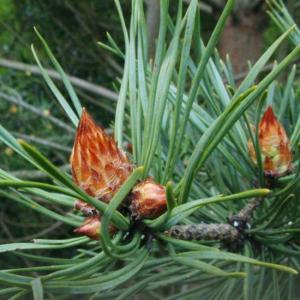

Botanical Name: Pinus Sylvestris
Botanical Origin: Eurasia
Part Typically Used: Buds
Common name: Flowers, Branch buds
Throughout this structure are : pegged male flowers, female globular which awaiting fertilization and new parts of needles.
Scots Pine is a species of pine that is native to Eurasia, ranging from Western Europe to Eastern Siberia, south to the Caucasus Mountains and Anatolia, and north to well inside the Arctic Circle in Scandinavia.
Pinus Sylvestris is an evergreen coniferous tree growing up to 35 m in height and 1 m trunk diameter when mature, the tallest on record being a more than 210-year-old tree growing in Estonia which stands at 46,6 m.
The lifespan of pine is normally 150 - 300 years, with the oldest recorded specimens in Lapland, Northern Finland over 760 years.
The genus name Pinus was derived from the Greek Pitus which referred toa Pine or fir tree.
Scots Pine is monoecious, meaning both male and female flowers grow on the same tree. Male flowers comprise clusters of yellow anthers at the base of shoots. Female flowers are small, red-purple and globular, and grow at the tips of new shoots.
Branch buds are around ½ inch long, cylindrical with a dull point, covered in loose, reddish brown, narrowly lance shaped scales.
One of the identifying characteristics of Pinus Sylvestris is that its leaves, called needles, occur in pairs. The two, twisted, ridged, blue-green needles form a structure called the fascicle. At first, the needles are covered by a brown, papery, protective sheath that falls off as time progresses.
Winged seeds are released as cone scales open. Connected spheres of pollen from male flowers fertilise female flowers. You can often find heaps of pollen in hollows on the ground. In summer fertilised flowers form green cones. The winged seeds inside takes 18 months or 3 years to ripen. Autumn cones turn brown.
Botanical Origin: Eurasia
Part Typically Used: Buds
Common name: Flowers, Branch buds
Throughout this structure are : pegged male flowers, female globular which awaiting fertilization and new parts of needles.
Scots Pine is a species of pine that is native to Eurasia, ranging from Western Europe to Eastern Siberia, south to the Caucasus Mountains and Anatolia, and north to well inside the Arctic Circle in Scandinavia.
Pinus Sylvestris is an evergreen coniferous tree growing up to 35 m in height and 1 m trunk diameter when mature, the tallest on record being a more than 210-year-old tree growing in Estonia which stands at 46,6 m.
The lifespan of pine is normally 150 - 300 years, with the oldest recorded specimens in Lapland, Northern Finland over 760 years.
The genus name Pinus was derived from the Greek Pitus which referred toa Pine or fir tree.
Scots Pine is monoecious, meaning both male and female flowers grow on the same tree. Male flowers comprise clusters of yellow anthers at the base of shoots. Female flowers are small, red-purple and globular, and grow at the tips of new shoots.
Branch buds are around ½ inch long, cylindrical with a dull point, covered in loose, reddish brown, narrowly lance shaped scales.
One of the identifying characteristics of Pinus Sylvestris is that its leaves, called needles, occur in pairs. The two, twisted, ridged, blue-green needles form a structure called the fascicle. At first, the needles are covered by a brown, papery, protective sheath that falls off as time progresses.
Winged seeds are released as cone scales open. Connected spheres of pollen from male flowers fertilise female flowers. You can often find heaps of pollen in hollows on the ground. In summer fertilised flowers form green cones. The winged seeds inside takes 18 months or 3 years to ripen. Autumn cones turn brown.
Submitted by OperaDreamhouse (November 5, 2017)
Elderflower (Sambucus Nigra Flos.) ☸ Plants ☸ Base / General
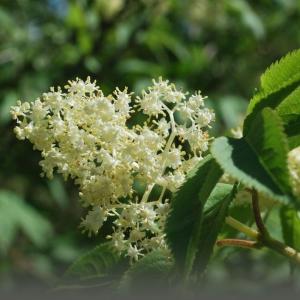

Botanical Name: Sambucus Nigra Flos.
Botanical Origin: Europe and North America
Part Typically Used: Flowers and berries
Sambucus Nigra is a species complex of flowering plants in the family Adoxaceae native to most of Europe and North America. The English term for the tree is not believed to come from the word "old" but from the Anglo Saxon, meaning fire, because the hollow stems of the branches were used as bellows to blow air into a fire.
It is a deciduous shrub or small tree growing to 6 m tall and wide (rarely 10m tall). The bark, light grey when young, changes to a coarse grey outer bark with lengthwise furrowing. The hermaphrodite flowers have 5 stamens and are borne in large, flat corymbs 10 - 25 cm diameter in late spring to mid summer, the individual flowers ivory white, 5 - 6 mm diameter, with five petals, they are pollinated by flies.
Botanical Origin: Europe and North America
Part Typically Used: Flowers and berries
Sambucus Nigra is a species complex of flowering plants in the family Adoxaceae native to most of Europe and North America. The English term for the tree is not believed to come from the word "old" but from the Anglo Saxon, meaning fire, because the hollow stems of the branches were used as bellows to blow air into a fire.
It is a deciduous shrub or small tree growing to 6 m tall and wide (rarely 10m tall). The bark, light grey when young, changes to a coarse grey outer bark with lengthwise furrowing. The hermaphrodite flowers have 5 stamens and are borne in large, flat corymbs 10 - 25 cm diameter in late spring to mid summer, the individual flowers ivory white, 5 - 6 mm diameter, with five petals, they are pollinated by flies.
Submitted by OperaDreamhouse (November 3, 2017)
Meadowsweet Flower (Filipendula Ulmaria) ☸ Plants ☸ Base / General
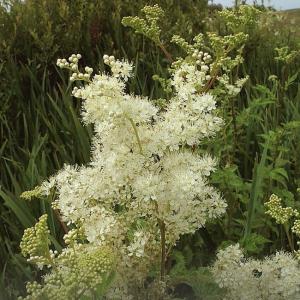

Botanical Name: Meadowsweet Flower (Filipendula Ulmaria)
Botanical Origin: Europe and North America
Part Typically Used: Flowers and leaf
Common name: Queen of the meadow, pride of the meadow, meadow-wort, meadow queen, lady of the meadow, dollof, meadsweet and bridewort.
Filipendula Ulmaria, commonly known as Meadowsweet or Mead Wort, is a perennial herb in the family Rosaceae that grows in damp meadows. It is native throughout most of Europe and Western Asia (Near east and Middle east). It has been introduced and naturalised in North America.
The stems are 1 - 2 m tall, erect and furrowed, reddish to sometimes purple. The leaves are dark-green on the upper side and whitish and downy underneath, much divided, interruptedly pinnate, having a few large serrate leaflets and small intermediate ones. Terminal leaflets are large, 4 - 8 cm long, and three- to five-lobed.
Meadowsweet has delicate, graceful, creamy-white flowers clustered close together in irregularly-branched cymes, having a very strong, sweet smell. They flower from early summer to early autumn.
Botanical Origin: Europe and North America
Part Typically Used: Flowers and leaf
Common name: Queen of the meadow, pride of the meadow, meadow-wort, meadow queen, lady of the meadow, dollof, meadsweet and bridewort.
Filipendula Ulmaria, commonly known as Meadowsweet or Mead Wort, is a perennial herb in the family Rosaceae that grows in damp meadows. It is native throughout most of Europe and Western Asia (Near east and Middle east). It has been introduced and naturalised in North America.
The stems are 1 - 2 m tall, erect and furrowed, reddish to sometimes purple. The leaves are dark-green on the upper side and whitish and downy underneath, much divided, interruptedly pinnate, having a few large serrate leaflets and small intermediate ones. Terminal leaflets are large, 4 - 8 cm long, and three- to five-lobed.
Meadowsweet has delicate, graceful, creamy-white flowers clustered close together in irregularly-branched cymes, having a very strong, sweet smell. They flower from early summer to early autumn.
Submitted by OperaDreamhouse (November 3, 2017)
Page 13 of 48

